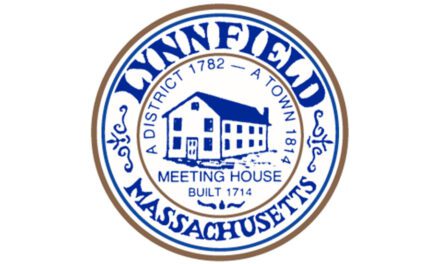By DAN TOMASELLO
LYNNFIELD — High School Principal Bob Cleary was peppered Jan. 13 with questions from the School Committee about the percentage of Lynnfield High School students taking Advanced Placement courses.
The high school principal appeared before the school board to give his annual Program of Studies presentation. He said high school department heads and teachers began working on the Program of Studies for the 2015-2016 school year last September. Cleary said there are no major course changes planned for next year.
Similar to other subject areas, Cleary said there will be no major changes to the business and computer courses offered at the high school. He said the high school is going to add an AP computer science course beginning in the 2016-2017 school year after the College Board finalizes the course’s curriculum. The high school will be offering 12 AP courses, which are run depending on course enrollment, after the AP computer science class is added to the Program of Studies.
The high school’s decision to add AP computer science stirred a debate about LHS’ AP course student participation rate among School Committee members.
School Committee Chairman Chris Barrett said he would like the high school to increase its AP participation rate, which currently stands at 35 percent. While Barrett said he’s pleased U.S. News and World Report ranked LHS as the 22nd best high school in the state last spring, he wants LHS to be ranked number one. He believes increasing LHS’ AP participation rate is a good way to accomplish that goal.
Cleary said high school officials and teachers are “constantly challenging our students to take the most demanding and challenging courses that they can.” However, he cautioned increasing the AP participation rate is no simple task.
“We can’t make kids take AP courses and AP tests but we can recommend it,” Cleary said. “We can encourage it all we want but it depends on what students and parents are looking for. Some parents are real gung-ho about it and others don’t want their kids too have too much stress.”
Barrett pressed Cleary on the issue. He asked Cleary what Belmont, which U.S. News and World Report ranked third in the state, is doing that LHS could replicate.
Cleary said the high school is constantly reaching out to area high schools, including Belmont, to see what areas LHS can improve.
“I think every high school is looking to get better but I don’t think there is a magic pill,” said Cleary. “We are constantly looking to see where we can improve.”
School Committee member Dorothy Presser said she is happy the high school is looking to add AP computer science in the future but she also expressed concerns about the high school’s AP participation rate.
“If you look at the 10 communities (the high school) is compared to, we are next to the bottom in AP participation,” said Presser.
Presser encouraged Cleary to look into adding AP environmental science and AP art courses to the Program of Studies in the future.
Cleary said art teacher Laura Johnson surveyed students to see if they are interested in taking AP art, but said only three students expressed interest in taking the course. He said the science department will be offering an environmental science and sustainability college prep course, which he said could lead to the high school offering AP environmental science in the future.
“We have to start with some baby steps and give kids a foundation,” said Cleary. “We are working on that all the time.”
Presser also said she wants the high school to offer more science courses to students.
Program of Studies
According to Cleary, the National Collegiate Athletic Association (NCAA) recently approved the high school’s English classes for next year.
Presser inquired why the NCAA had to approve high school English classes.
Cleary said the NCAA is required to approve the high school’s courses just in case any student plays a sport in college. He said the NCAA requires certain courses to be approved to make sure they are appropriate for future collegiate athletes even though Cleary said the majority of high school students will not be playing collegiate athletics.
“If you look at the level our kids are performing and what we are doing, it doesn’t really pertain to most of the courses we have,” said Cleary. “But if you look at different parts of the country where high schools’ course load may not be as rigorous, the NCAA tries to ensure kids have a rigorous academic background.”
According to Cleary, the high school will no longer be offering the statistical research for social science class next year. He also said the high school is looking to require students to take math classes for all four years beginning in the 2016-2017 school year. While Cleary said the majority of high school students take math for all four years, he said the Class of 2016 should be aware that four-year public universities will be requiring students to complete a full four years of math in order for students to be considered for admission.
Presser expressed her support for Cleary’s proposal.
“I think we should absolutely be requiring kids to take math all four years,” said Presser.
According to Cleary, there is only one small change to the foreign language department. He said the high school will be offering advanced Latin prose next year after previously offering advanced Latin poetry this year. The two content areas rotate every other year.
Cleary noted students have the option to take classes not offered at LHS such as oceanography through the Virtual High School Global Consortium (VHS).
Additional SC comments
Presser asked Cleary if the business department has any plans to revamp the desktop publishing and technology for the 21st Century courses.
“I wonder if there is still a relevance to those classes,” she said.
Cleary said the high school is looking to revamp the two courses but said the high school is in a holding pattern until the AP computer science course gets finalized.
School Committee member Jamie Hayman said he is looking forward to hearing Superintendent of Schools Jane Tremblay present her entry plan this winter. He said Tremblay’s entry plan will give school officials a “fresh view” of ways to improve the school system, the high school included.
“The thing I am taking away from this is there is nothing out there that is glaringly bad, which is a double-edge sword because there is no silver bullet to fix anything,” said Hayman. “But I think there are things that could be incrementally better.”




